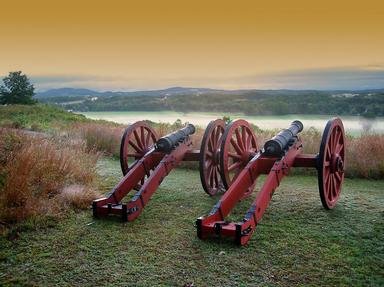Quiz Answer Key and Fun Facts
1. The foundations of the development of modern medicine in the U.S. started during the Civil War.
2. Roughly, how many people died during the Civil War?
3. Did Civil War surgeons and medical teams know about germ theory and antiseptics?
4. About how many medical schools were there in America prior to the Civil War?
5. Besides medical school what other method of becoming a doctor was there?
6. What was the usual course of studies in medical schools prior to the Civil War?
7. Were new recruits allowed to enter service with chronic diseases or physical defects?
8. Why did many new recruits become victims of illnesses?
9. What percentage of deaths were due to disease rather than wounds?
10. In August of 1862 what did Jonathan Letterman, the medical director of The Army of the Potomac, develop to help in the care of wounded soldiers?
11. Were horses and mules an important part of medical evacuation plans during the Civil War?
12. How many horses are estimated to have died during the Civil War?
13. Where did wounded soldiers typically receive their first care after being picked up from the battlefield?
14. Jonathan Letterman was quoted as saying what about the wounded?
15. At field hospitals the wounded were divided into three groups. Which of the following was not one of these groups?
16. In field hospitals most surgeries of the wounded were amputations, true or false?
17. If you watch many Civil War movies you usually see someone screaming in pain as they are held down to have a limb cut off. In reality what percent of operations were done under some form of anesthetic?
18. Amputations were usually the result of which of the following?
19. Once general hospitals were put into use, what did the survival rate of the wounded reach?
20. As large battles with lots of casualties raged on, the stretcher business became big business. Two companies, Satterlee and Holstead, were some of the first to supply this equipment. Surprisingly, what did these first stretchers weigh in approximate terms?
21. Medicines and tonics had to be taken to where the wounded were. What packaging was most often used for these during the Civil War?
22. Hospital department bottles were produced in many colors. They came in clear, aqua, cobalt blue, apricot, purple, and shades of green. Did the colors of the bottles show any clear signs as to the medicine contained in the bottles?
23. What year did Hospital Department bottle production end?
24. What was a "Squibb Pannier"?
25. For those families who could afford to have their loved one's remains shipped home for burial, what was the most favored means of preparing the bodies?
Source: Author
foxgap
This quiz was reviewed by FunTrivia editor
bloomsby before going online.
Any errors found in FunTrivia content are routinely corrected through our feedback system.


